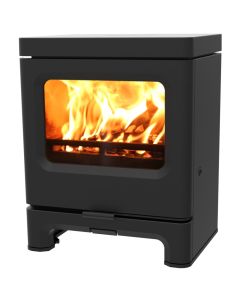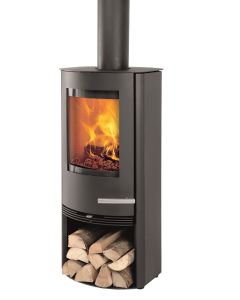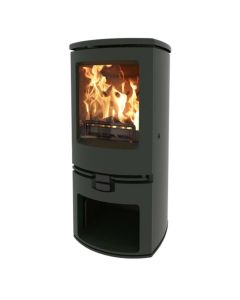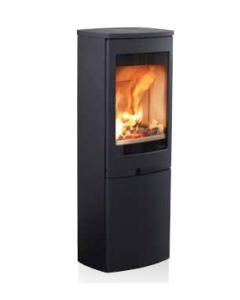We use cookies to make your experience better. To comply with the new e-Privacy directive, we need to ask for your consent to set the cookies. Learn more.
Woodburning Stove and Chimney flue for New Builds or air tight homes
What is a Passive house?
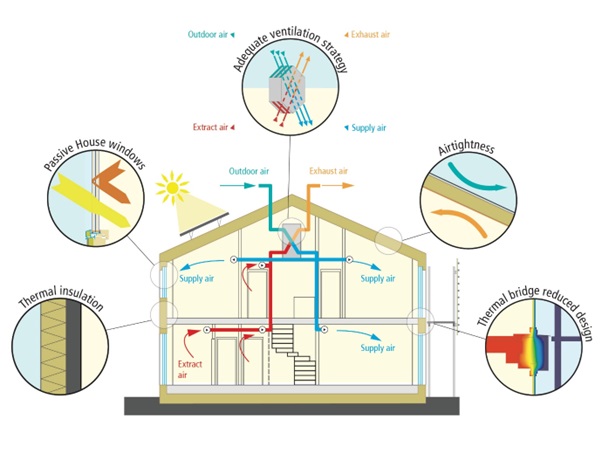
A passive house or passivhaus, is a building design approach that aims to highly create energy-efficient and comfortable living spaces.
They usually have:
- Superinsulation: Passive houses are constructed with a highly insulated building envelope. The walls, roof, and floor are designed to minimize heat transfer between the interior and exterior, reducing heat loss in winter and heat gain in summer.
- Airtightness: Passive houses are built to be extremely airtight, preventing uncontrolled airflow through gaps and leaks. This helps maintain a stable indoor temperature and reduces energy losses.
- High-performance windows: Passive houses use triple-glazed windows with insulated frames and low-emissivity coatings to reduce heat transfer. These windows maximize natural light while minimizing heat loss and noise.
- Ventilation with heat recovery: Passive houses incorporate a mechanical ventilation system with heat recovery. This system continuously supplies fresh air while extracting stale air, recovering the heat from the outgoing air and transferring it to the incoming air. This ensures a constant supply of fresh air while minimizing energy losses.
Its worth noting that not all New Builds or Air Tight Homes will be classed as a Passive House.
Should I buy a DIBT tested stove for my airtight home?
Some Hwam, Wiking and Morso Stoves are usually a good option for installation into a passive house as some of these will have been DIBT tested.
Stoves that have been DIBt (German Institute for Building Technology) tested for passive homes can be a good choice for achieving optimal performance and compatibility with passive house principles. DIBt certification ensures that the stove meets specific criteria and performance standards relevant to passive house requirements. However, it's important to note that DIBt certification is specific to the German market and may not be applicable or available in all regions.
Stoves that have undergone DIBt testing typically demonstrate high combustion efficiency, low emissions, and features that align with the principles of passive house design. They are designed to work effectively in airtight and well-insulated buildings, minimizing heat loss and ensuring good indoor air quality.
While DIBt certification can be a helpful indicator of a stove's suitability for passive homes, it's not the only factor to consider. Other important factors to assess include:
- Efficiency and Emissions: Look for stoves with high combustion efficiency and low emissions, regardless of DIBt certification. This ensures that the stove operates efficiently and minimizes environmental impact.
- Compatibility with Ventilation System: Consider how the stove integrates with the ventilation system in your passive house. Look for stoves that have options for external air supply, allowing them to draw combustion air from outside the house while maintaining airtightness.
- Heat Distribution: Evaluate how the stove's heat will be distributed throughout the passive house. Stoves with built-in heat storage capabilities or the ability to distribute heat through a duct system can help achieve even heat distribution.
- Size and Design: Consider the size and design of the stove in relation to the space available in your passive house. The stove should fit well and complement the overall aesthetics of the building.
- Local Regulations and Standards: Check the regulations and standards specific to your region or country regarding stoves and their installation in passive houses. Ensure that the stove you choose complies with these requirements.
While DIBt-certified stoves can be a good starting point for selecting a stove for your passive house, it's important to consider a combination of factors to ensure the best fit for your specific project. Consulting with experts in passive house design or stove manufacturers with expertise in energy-efficient homes can provide valuable guidance and help you make an informed decision.
Renovations, New Builds but not Passive house
Not all stove with a direct air kit will be suitable for a Passive house. But not all renovations or new builds will be a truly passive house but maybe just well insulated. (Passive houses are designed to have a continuous airtight outer shell. Leakage through any gaps must be less than 0.6 of the total house volume, per hour, at 50 Pascals pressure. This rate is known as Air Changes per Hour (ACH50) and is measured in a process known as a blower door test.)
Many good quality stoves that are not DIBT tested are also available with a direct air kit which are suitable for new builds or a renovation. You can easily find out if they are direct air compatible by calling us, visit our showrooms or checking the manufacturer’s manual.
Stoves & Flue solutions for Air tight homes
There are two tested Poujoulat flue systems for Air Tight home
Poujoulat Therminox Air-Tite kits.
Poujoulat Efficience Triple Wall flue which takes air intake from the chimney to and feeds it onto your stove.
Air in take on the Poujoulat Efficience
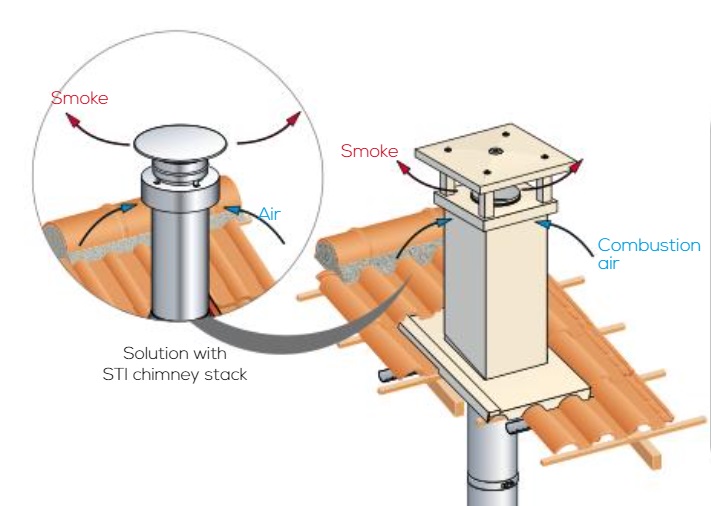
Airtightness components

Connecting to the Stove
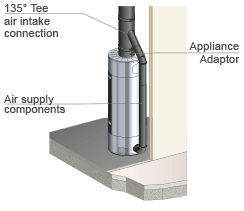
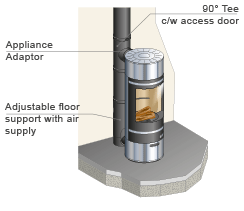
Stoves available from Our Website which have been tested on the Efficience system are
Charnwood Arc and Skye range
Termatech TT20, TT21, TT60 and TT80
Nordpeis Duo 5 and Nordpeis ME Classic
Contura 800, 500, 600 style
